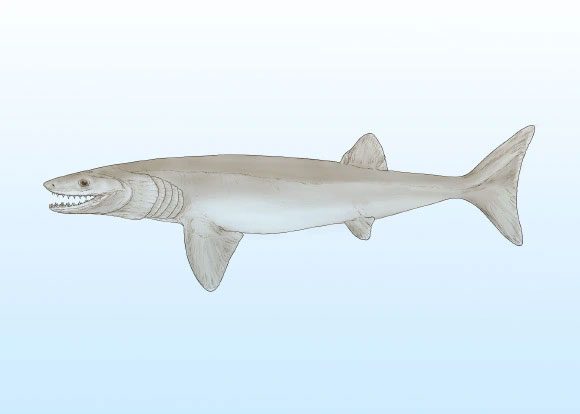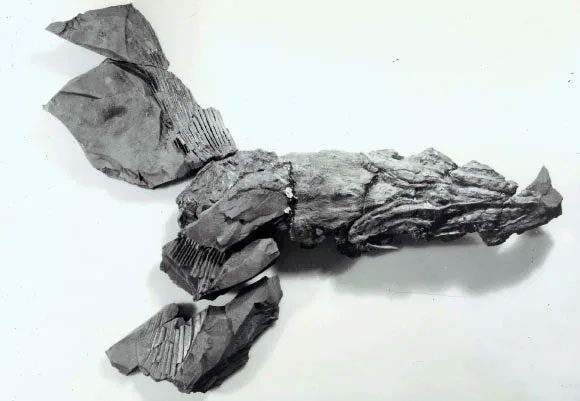An enigmatic species of shark has emerged from the deadly world following the Devonian mass extinction, showcasing an anatomical structure completely different from modern sharks.
According to Sci-News, this strange shark species has been named Cosmoselachus mehling. It is one of many well-preserved fossil shark species from the Fayetteville Shale Formation, which stretches from southeastern Oklahoma to northwestern Arkansas in the United States.

A completely new shark species from the Carboniferous period – (Graphic: SMITHSONIAN NATIONAL MUSEUM OF NATURAL HISTORY)
Excavated in Arkansas, this shark has lain dormant in rock layers dating back to 326 million years, during the Carboniferous period.
Thus, this shark belongs to the group of organisms “born from the dead,” rising to occupy ecological niches left vacant after the late Devonian mass extinction.

Fossil parts collected – (Photo: SMITHSONIAN NATIONAL MUSEUM OF NATURAL HISTORY)
According to a research team led by paleontologists from California Polytechnic State University, Cosmoselachus mehling is an entirely new shark species and also belongs to a new genus.
It existed during a time when ancient oceans were home to numerous chondrichthyan species with an astonishing morphological diversity, including all the unusual anatomical structures that we do not see in modern sharks.
In fact, its fossil was collected in the 1970s by Professors Royal and Gene Mapes from Ohio University, but at that time the scientific community did not recognize it as a new species.
In this recent study, paleontologists utilized CT scanning and digital reconstruction techniques to meticulously describe every small piece of cartilage.
After piecing them together and comparing them with other primitive chondrichthyans, they realized it was something completely distinct.
This new species plays a crucial role in understanding the evolution of a mysterious group linking sharks to modern ratfish.
This new species primarily exhibits characteristics similar to sharks, but it possesses elongated cartilage that forms a gill cover, a feature only seen in modern ratfish.
Therefore, it likely belongs to a common ancestral branch between these two species, contributing to the explanation of the origins and a significant stage in the evolutionary tree of sharks—one of the oldest lineages on the planet.
The new study has just been published in the scientific journal Geodiversitas.


















































